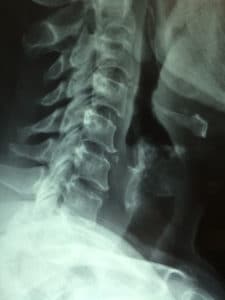How Dangerous is Whiplash?

Because of the multitude of symptoms that come with whiplash and the way it presents itself, understanding the condition can be overwhelming. If you’ve sustained a whiplash injury, you probably have a lot of questions. Keep reading to find out what whiplash is and why it happens, how it’s treated, and what you can expect in regard to recovery.
What is Whiplash?
Whiplash is a neck injury that results from forceful, rapid back-and-forth movement of the neck. Essentially, the structures within the neck move and change the normal curve of the neck and upper back. The neck is particularly vulnerable to this type of injury because of its ability to move in a multitude of directions
This is a common car accident injury because the impact of a collision often causes the muscles and tendons in the neck to stretch or tear. Victims in rear-end collisions often sustain whiplash because of the force their vehicle moves after having been struck from behind.
Whiplash can be difficult to diagnose because of the array of symptoms it presents with. It can also present with delayed symptoms. When you seek medical attention for an injury like whiplash, medical professionals are likely to examine your injuries and ask you what occurred, look at your medical history, and complete a series of physical and neurological tests. These tests may include X-rays, CT or MRI scans, and blood work. They will also assess your pain level and look for signs of traumatic brain injury or spinal cord injury.
What are the Symptoms of Whiplash?
The symptoms of whiplash and the level of pain experienced vary greatly depending on the reason the whiplash occurred and the age and health of the victim. Many individuals will experience a variety of the symptoms listed below:
- Neck pain
- Stiffness or spasms of the muscles in the neck or upper back
- Headaches
- Loss of range of motion in the neck
- Tenderness or pain in the shoulders, upper back, or arms
- Tingling or numbness in arms
- Fatigue
- Dizziness
With more severe whiplash cases, a person may also experience:
- Blurred vision
- Ringing in ears
- Difficulty swallowing or a sore throat
- Sleep disturbances
- Irritability
- Difficulty concentrating
- Memory problems
- Depression
In addition to the severe symptoms listed above, the intervertebral joints, discs, ligaments, cervical muscles, and nerves in the neck or upper back are susceptible to injury. The symptoms a person experiences may be worse if they’ve been diagnosed with whiplash before, are of a more advanced age, or have existing back or neck pain.
How is Whiplash Treated?
Typically, whiplash is a condition that will get better over time. When the injury initially occurs, the doctor may provide a temporary soft cervical collar to immobilize the neck if the pain cannot be controlled. The brace will usually be worn for less than a week, if at all.
If a patient follows through with a doctor’s treatment plan, the symptoms could go away in as little as a few weeks. A doctor may recommend over-the-counter pain medication to reduce pain, swelling, and muscle spasms. Exercise will also be suggested. Remaining as active as possible is often important. Applying ice and heat and resting will also help ease the symptoms.
If the pain persists, you may need to attend physical therapy sessions. Physical therapy can help whiplash sufferers increase circulation, restore their range of motion, and promote healing.
In the instance of severe whiplash, the symptoms may last for an extended period of time. At this point, especially if daily activities are being negatively impacted, a doctor might prescribe prescription painkillers, muscle relaxers, or lidocaine injections. If the pain lasts for a significant number of weeks or months, there may be a more severe, unidentified injury.
If you neglect your whiplash treatment, the consequences can be life-altering. The dangers resulting from untreated whiplash involve chronic pain, permanent injury, and the loss of mobility.
If you’ve suffered injuries as a result of someone else’s negligence, you have the right to try to hold that party accountable for their actions. You may be eligible for compensation for your medical expenses, lost wages, pain and suffering, and more.






